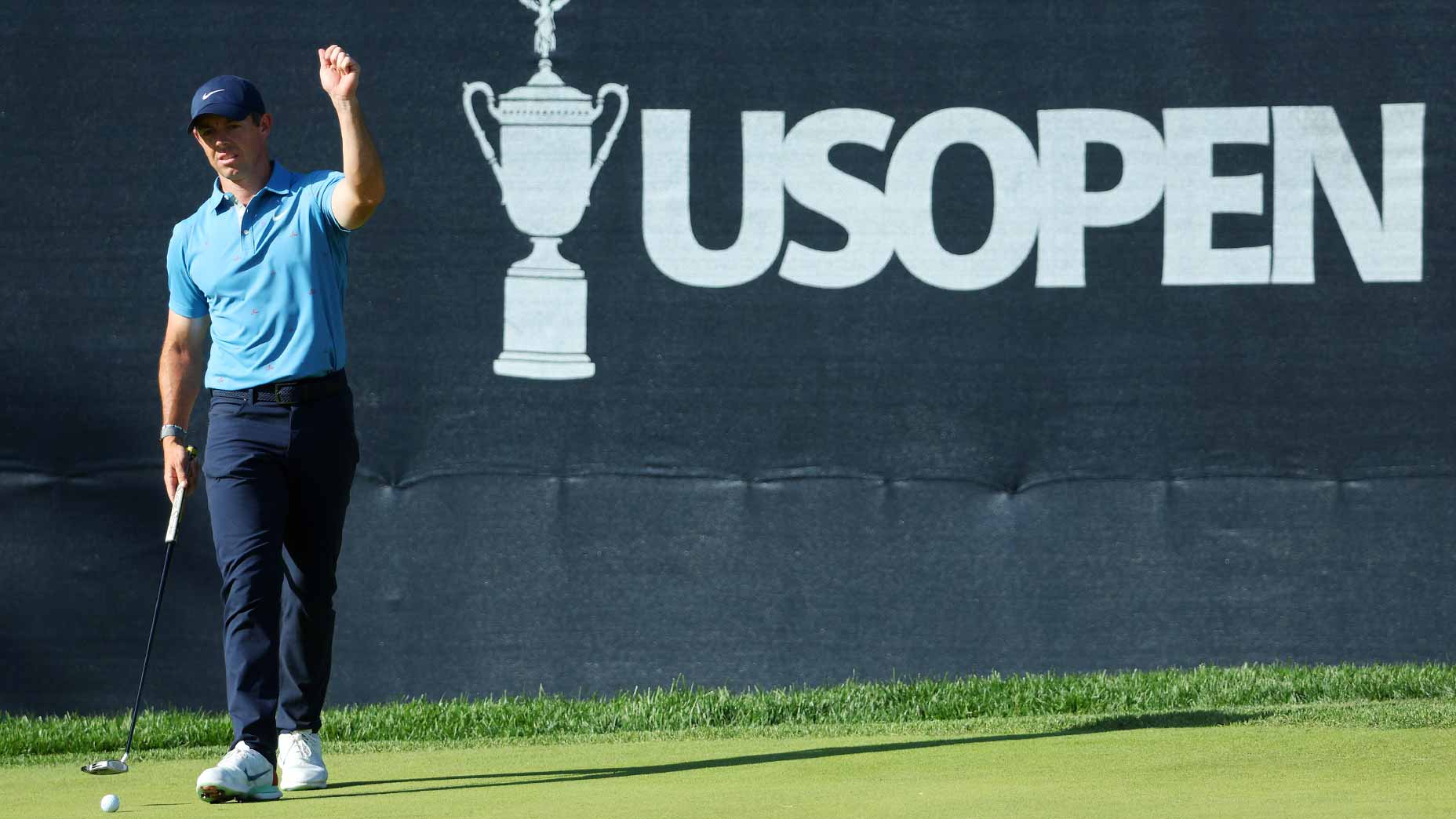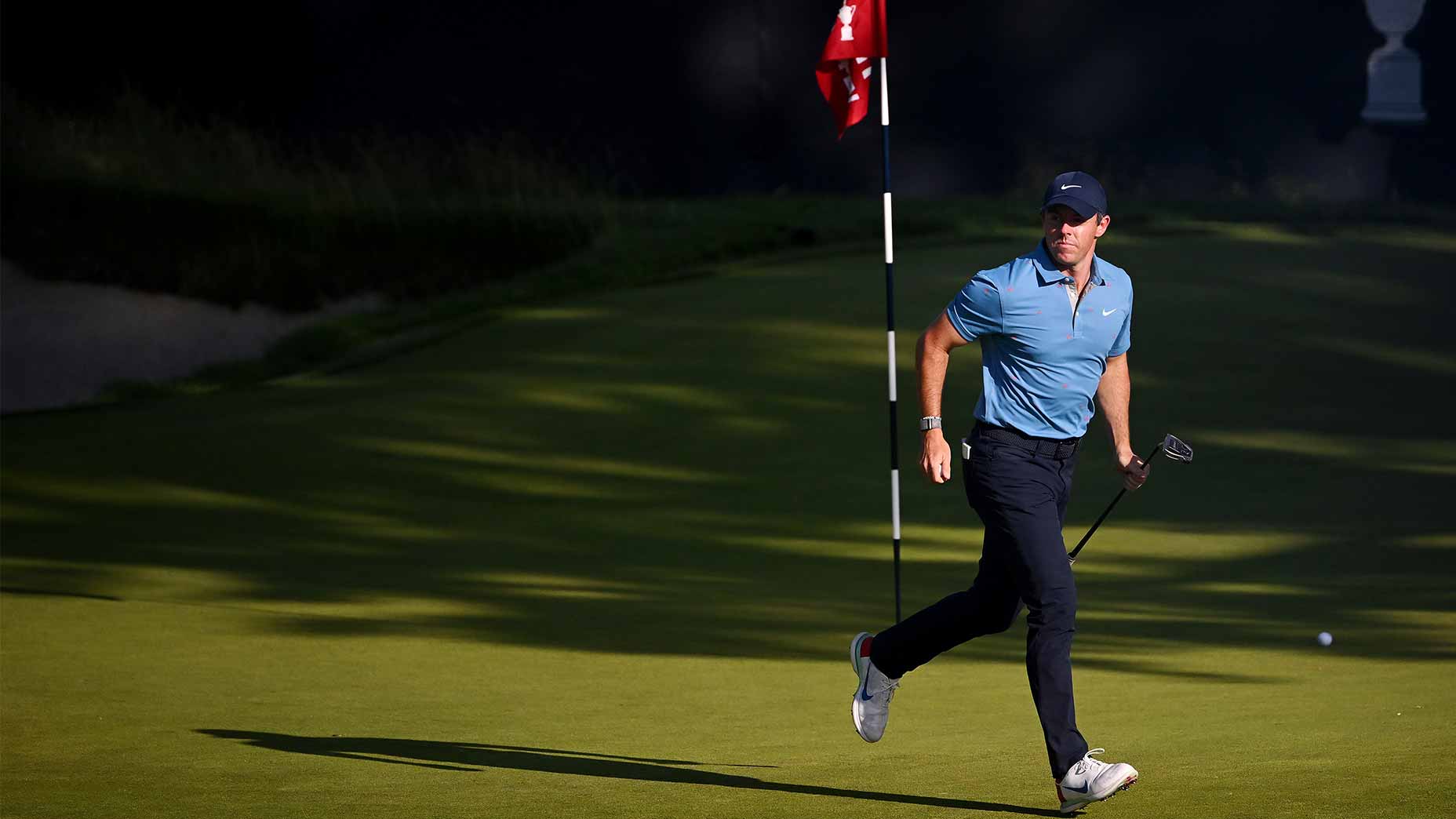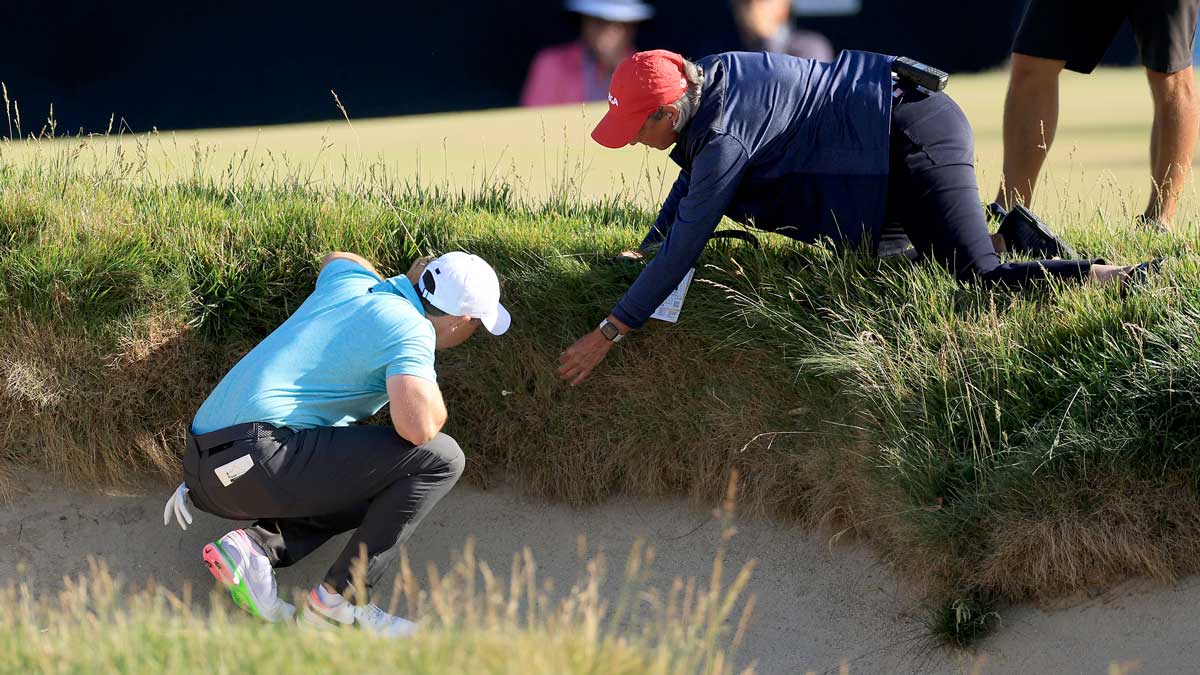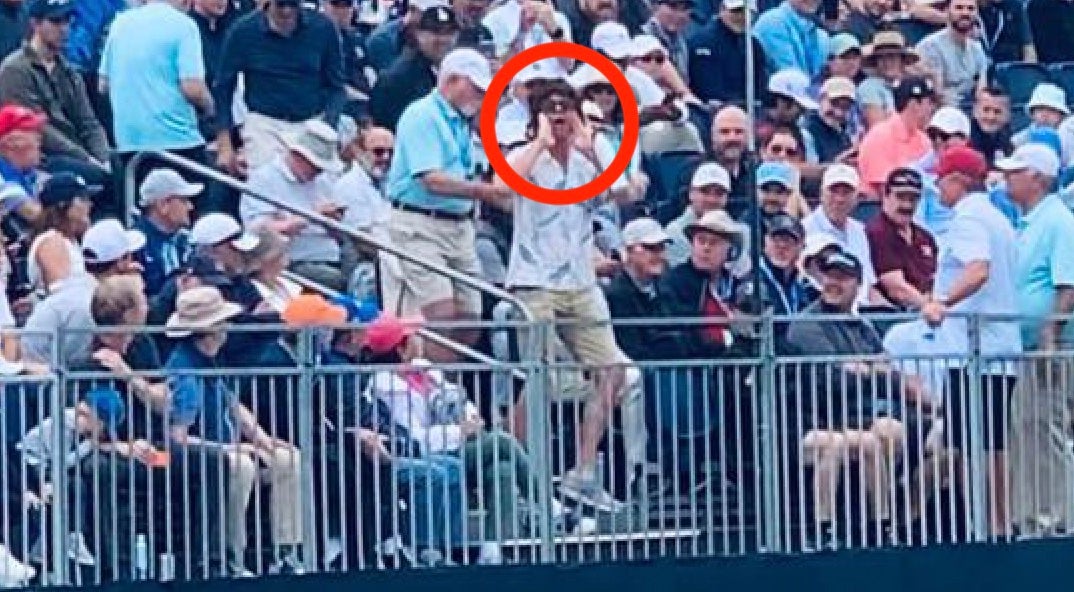Could Brookline be exactly what Rory McIlroy needed at a major?

Could this U.S. Open be exactly what Rory McIlroy needed?
Getty Images
BROOKLINE, Mass. — How could this be what Rory McIlroy needed?
This championship, in this environment, at this golf course? If Rory were ever to awake from the curse of his last decade in time to win a major championship, it certainly wouldn’t be at a U.S. Open, it couldn’t be in pressure-packed Boston, and at The Country Club? I mean, get real.
And yet there was Rory McIlroy on the 616-yard 14th hole on Friday, stepping on a drive like he’d taken last night’s Celtics loss personally. And perhaps he had, because when his ball finally returned to earth, it was 351 yards(!) into the fairway. The fans around the 14th went ballistic when McIlroy’s blast finally made landfall, cruising well over the giant oak on the left side of the fairway on a line all-but-five golfers on earth would even dare take.
“Twenty-two this week, Rory!” yelled one fan, referencing the career win total he could reach at Brookline.
“Eagles to be had here Rory! Eagles to be had!” screamed another. (Of course, he was wrong — through two rounds, there have only been five eagles on No. 14 — but his point was well-received.)
Things are not inherently different for Rory McIlroy at the U.S. Open. At least, not in the conventional sense. The four-time major champion enters the weekend cemented in contention, his four-under score for the week just one stroke back of the marks set by Joel Dahmen and Collin Morikawa. This was not a surprise — McIlroy has been playing very good golf for a little while now. He is swinging the club as well as he has in a very long time.
We’ve also been saying that at major championships for what feels like the last five years, but is a little bit more like the last eight months. The Rory Charge, the one we’ve all been told to assume was coming, hasn’t. He’s faded early (Augusta in April), late (Tulsa in May) and, on one occasion (the Ryder Cup), failed to show up at all. We’re tired of expecting a Rory coronation. When it happens, we said, we’ll be ready for it.
So is it possible it’s happening at the U.S. Open? Think about it. For the longest time, the biggest thing standing in Rory’s way has been … Rory. When things start to go bad, he overcompensates. When things are going well, he gets overaggressive. He’s admitted as much himself.
“I think I ride waves of momentum pretty easily,” he said Friday. “Certainly whenever you get on the crest of a wave and you try to ride it as long as you can, and I’ve gotten a little bit better at trying not to ride the other ones downwardly.”
At Brookline, momentum is everywhere … or nowhere. There are plenty of opportunities to blow up your good score, and only a handful of opportunities to bolster it. For most players, that has manifested itself in a drudgery of pars, more than 3,000 of them over the first two days. For Rory, perhaps that’s manifested itself in something else: a forced improvement to his mental state.

“After I bogeyed 10, I just wanted to try to shoot under par. I had some chances coming up,” he said. “Just played a really clean eight holes, which was pleasing. Hit fairways, hit greens, gave myself chances. Got myself right back in the tournament.”
For a player as talented as McIlroy, sometimes it really is that simple. Of course, it sounds that way with the benefit of hindsight — like knowing the 30-foot make for double-bogey didn’t sink his championship chances.
But at the U.S. Open, a double (or even a triple) on its own isn’t enough to sink anybody’s tournament chances. In some ways, it’s easier because the course is harder.
“There’s a lot of this golf course — I think there’s a nice flow to it that you can get on a little bit of a run and start to make some birdies,” McIlroy said. “And if I do encounter that this week, I feel like I’m pretty good at riding those sort of waves of momentum through the course of a round.”
As he came up to the 17th tee box, McIlroy sure looked the part, but the 17th has a way of deciding fate for itself. It was here in 1913 that Francis Ouimet clinched his victory with a birdie, while Vardon sunk his own chances with a bogey. Here in 1991 that Justin Leonard clinched an American victory at the Ryder Cup.
In a past life, perhaps the weight of this moment would have been too much for McIlroy. But not on Friday. He smoked a 4-iron into the fairway on the short par-4. He clipped his wedge cleanly, coming to rest on the very front edge of the 17th green. And then — after a brisk jog to mark his ball — he drained the 12-footer for birdie. The gallery exploded.
Suddenly, McIlroy was four under and tied for second place.
“I think I play quite an emotive brand of golf, if there is such a thing,” he said. “I’ve always liked having crowds. I like the interaction. I enjoy that part of it. I’m certainly not one to keep my head down and sort of look straight in front of me, tunnel vision. I like looking around. I like seeing people out there. Maybe that’s part of it.”
Maybe this is a player meeting a moment at eye-level, or riding the emotions with better perspective, or finally overcoming the demons of the past. Or maybe it’s something simpler. Maybe this is just the right player, at the right time.
See you Saturday afternoon.











